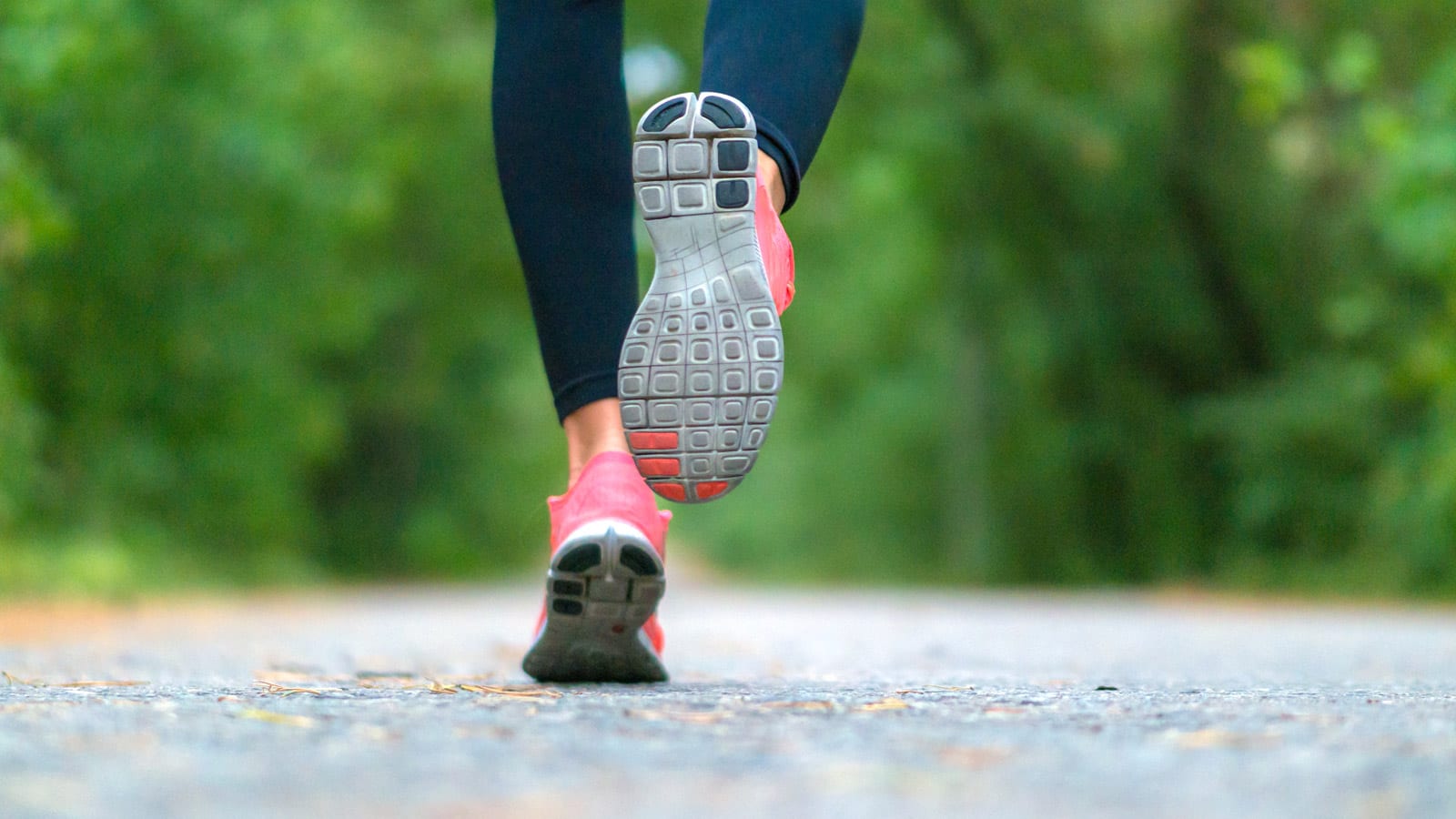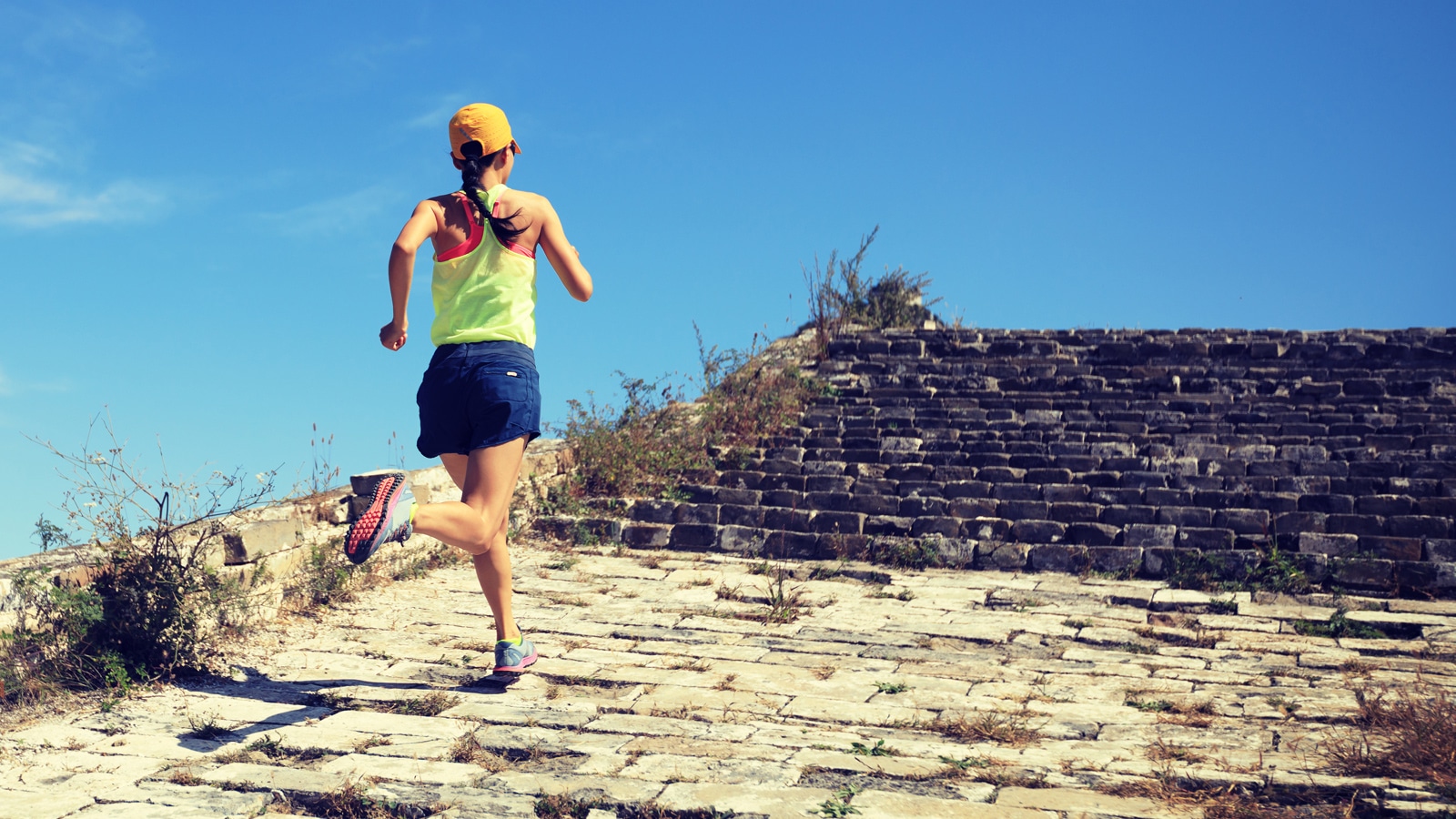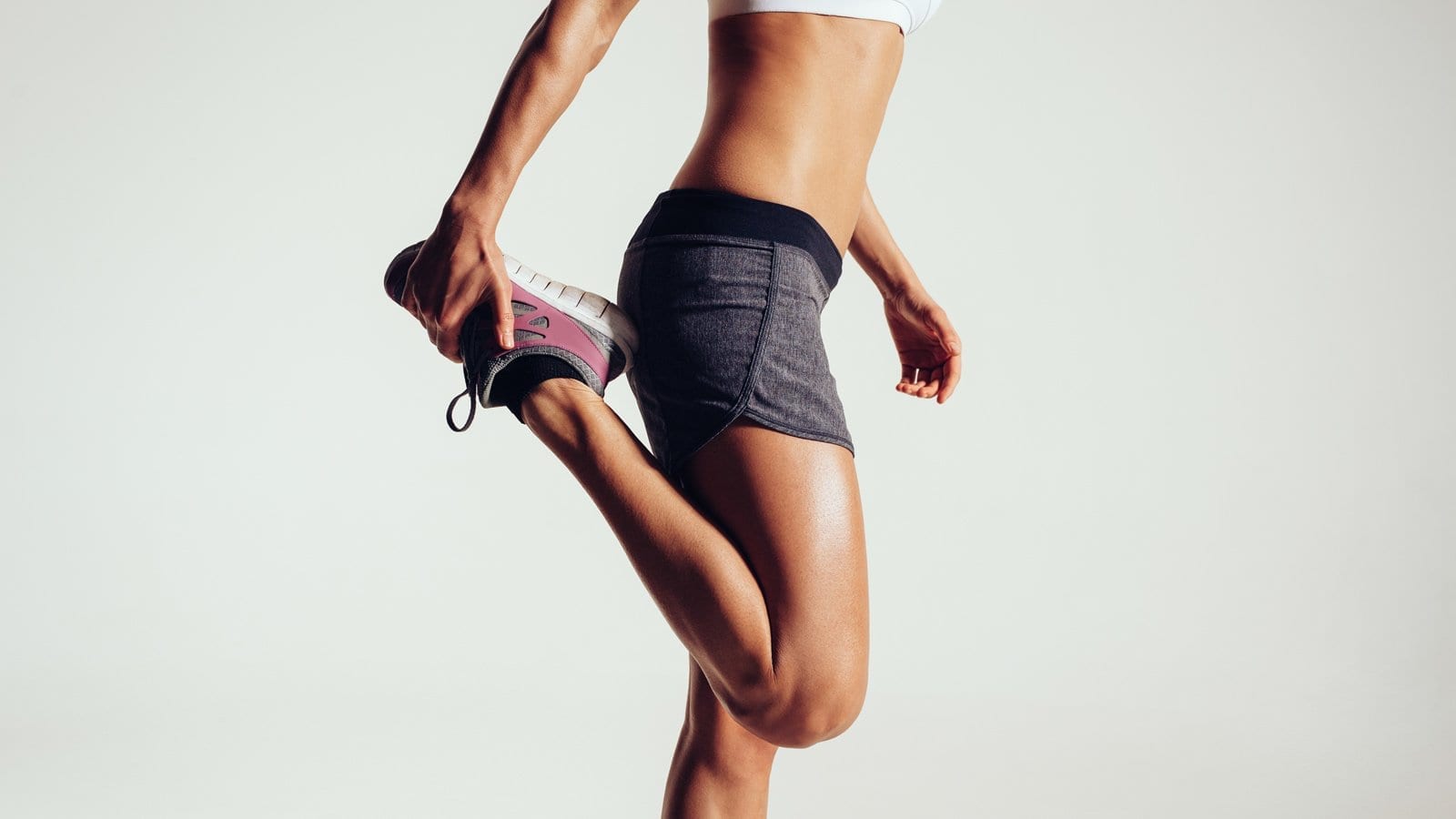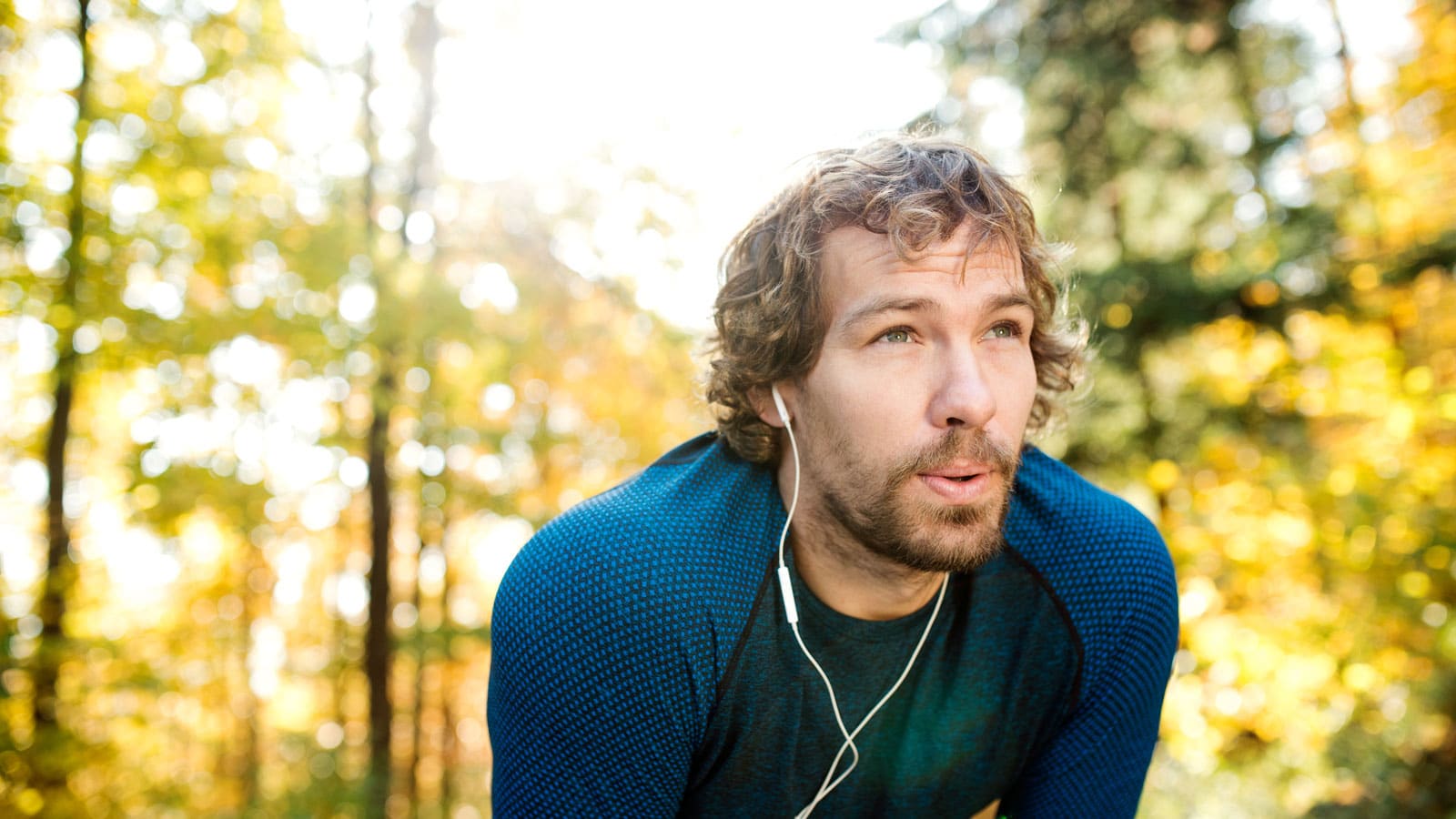How To Start Running At 50: Tips From An Older Runner
Think you’re too old to start running at 50 plus? Think again. Getting older is being reinvented. As you slip into middle age it’s a great time to start running.
I may be a lifelong runner but at 58 I know all about creaking a little in the morning. Plus I’ve known so many people start running at 50 – and with their fresh legs and motivation, most of them are now better runners than me! In my view, running is the best way to get fit whatever your age.
Read on for some inspiration and tips for older athletes.
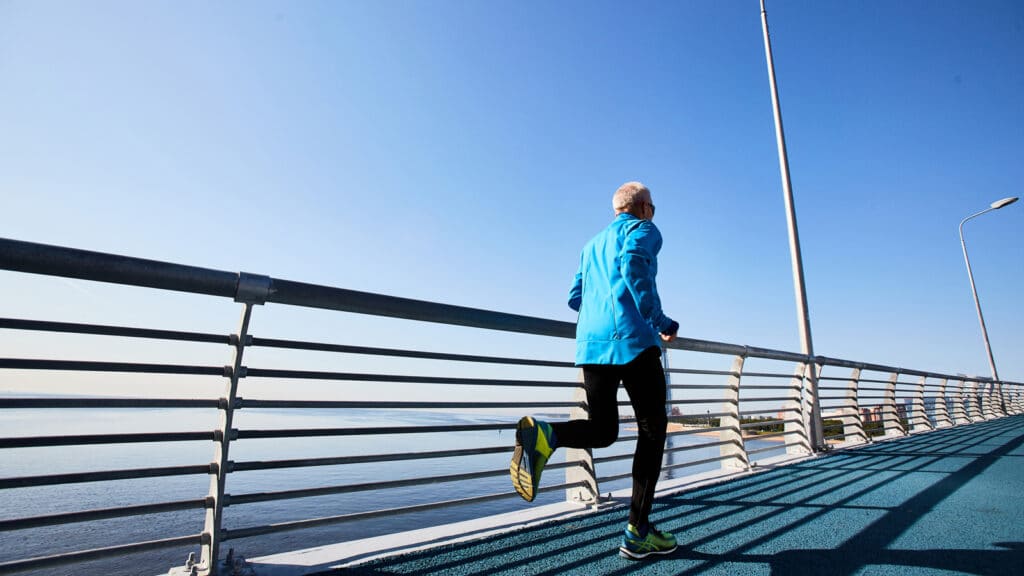
Can You Start Running At 50?
Fortunately, times change. Attitudes that held back older people in the past are being rewritten. Our generation is ripping up the rule books.
Last weekend 3 female runners from my club took part in the World Masters Mountain Running Championship. They have an average age of 65 and they all nailed a 5-mile course with over 500m of ascent. I hope I’m running just as well when I hit my sixties.
You can get fitter and regain muscle mass at any age. It takes a little longer than when you were 20 and you need to be realistic about your expectations. But so many older people limit what they’re able to do because they have the wrong mindset. They reach a certain age and think they’re too old to improve their fitness or do anything adventurous. That’s so wrong!
For most people running at 50 plus is a great way to stay fit, improve your cardiovascular fitness, and keep your bones strong.
You may need to lose some weight first and start with walking, but unless your doctor has some strong objections you can definitely start running at 50.
And don’t limit yourself to the roads! Trail running over 50 is increasingly popular. It’s kinder on the joints running on softer ground instead of roads and you get to enjoy running with wonderful vistas!
✳️If you haven’t exercised for a long time or you’re carrying a lot of excess weight, check in with your doctor before you start running. It’s best to be on the safe side if you have health concerns that may prevent you from running. Get some proper medical advice.
The Benefits Of Running Over 50
There are so many health benefits of running and these count just as much when you’re over 50. In fact, the positive effects of running are even more pronounced when you’re older.
Running is good for your mental health, reduces your risk of chronic diseases, and helps keep your bones and muscles strong. It can also help you maintain a healthy weight and improve your balance and coordination.
Start running if you want to reduce high blood pressure, have a healthy heart, and sleep better at night.
Read more in this related post: Is Running Good For You?

How Does Aging Affect Your Running?
I always thought that if I was still running at a certain age just showing up at races would be enough to win my age category. How wrong could I be! Older runners are killing it.
The truth is, for endurance runners, the slowdown in running performance only starts at 40. After that, it’s a very tiny decrease slowing at about 1% per year – a lot less for shorter races and more for longer distances.
Oxygen uptake and maximum heart rate decrease with age but your running economy hardly changes.
Bill Smith and Scott Murr have spent years investigating the performance of older athletes. Their book Train Smart Run Forever is a must-read for older athletes. My main takeaway is that the slow-down in older runners is mainly to do with not training the same way as your younger self.
A lot of older athletes put on a few pounds, avoid the pain of interval training or the challenge of strength training and opt for easy running. There’s nothing wrong with this approach, it can still be enough to keep you fit and healthy but it’s the main reason you’re a slow runner. It has very little to do with age.
In contrast, fresh over 50 new runners have a lot of advantages over lifelong runners – no preconceptions about how to train, lots of enthusiasm, and no niggling injuries from over-training in their youth.
How To Start Running At 50 And Overweight
Let’s face it, most people start running to lose a few pounds, especially at fifty-plus. There’s that little thought at the back of your mind that you’re at the last chance salon – do something about your health and fitness now if you want to live long enough to get your pension.
It’s a great incentive to get fit and start running.
Running for weight loss can be very effective but you can’t outrun a bad diet. If you’re trying to lose weight make sure you’re combining your running program with a healthy eating plan. When you go for a run and reward yourself with unlimited donuts – that weight loss is never going to happen.
If you’re extremely overweight, it’s best to lose a few pounds first then start a walking for weight loss program. Build up a basic level of fitness before you start running. If you haven’t exercised in a long time, brisk walking will challenge your body enough to lose weight.
Related post: Is Diet More Important Than Exercise?
Tips To Start Running Over 50
Most tips from my related article running for beginners apply just as much to older runners. The only difference is at 50 plus your body needs a little more coaxing along. A bit more TLC.
A twenty-something may get away with setting off at a fast pace without a warmup. At over fifty skipping your warmup is a recipe for disaster – expect to be stiff and sore the next day. Likewise, while all beginners need to progress slowly and avoid doing too much too soon, when you’re older build your running foundation really slowly – less is more if you want to avoid injury.
Here are my top tips to start running over 50:
#1 Buy Some Good Shoes
The best thing when you start running is you don’t need lots of equipment – just a good pair of shoes. But they do need to be good – especially when you’re older and your joints need some extra protection against the impact of running.
It’s a good idea to buy your first pair of running shoes in an independent running store. Comfort is key when it comes to buying shoes. Walk around the store and make sure your shoes feel right. A good running store will analyze your gait but this may change over the next few months as your legs strengthen.
Related post: Best Running Shoes For Overweight Runners
#2 Follow A Suitable Running Plan
The running plan you follow will depend on your current fitness level. If you already exercise and you’re just new to running, you’ll have an advantage over someone starting from the couch.
That doesn’t mean you need to be fit before you take up running – it just means if it’s the first time you’ve exercised in years you need to take it slow.
The Couch To 5K Plan is the best training plan for most new runners. It’s a program to take you from zero to running a 5K race in just 9 weeks. The good news is the plan starts with run-walk intervals to ease you into running properly. That’s a lot less scary than setting off for a 2-mile continuous run straight off the couch – and a lot better for your body. Those muscles need a chance to adapt to your new regime!
If you’re starting from a low fitness level 9-weeks might be a little bit too fast for you but you can always repeat weeks and progress at a level that feels comfortable – challenging but not so hard you can’t get out of bed the next morning!
For fitter new runners, there’s a Couch to 5K in just 6 weeks option. Just make sure you’re not overdoing it and pushing too hard.
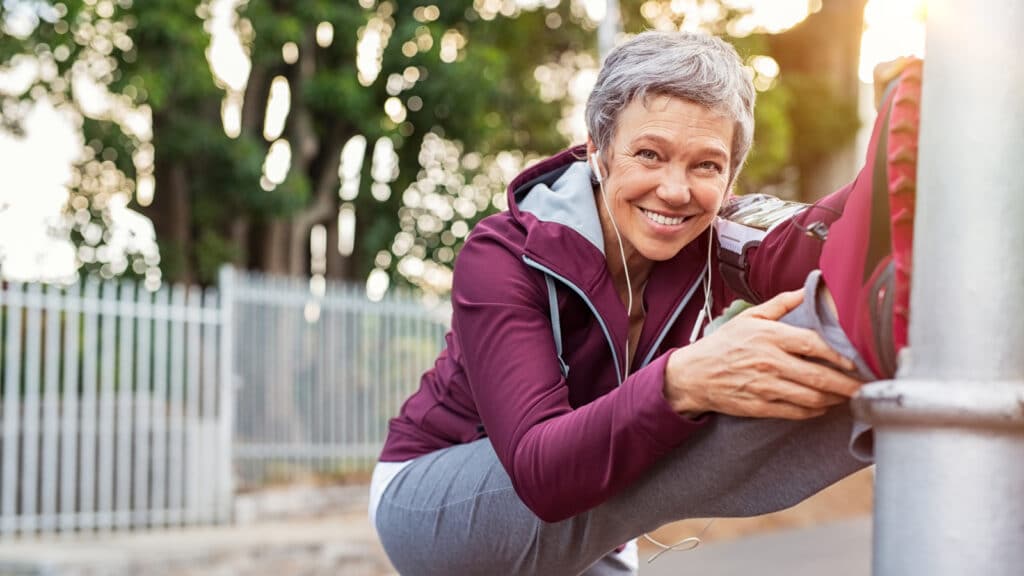
#3 Warm Up Properly & Warm Down
Most new runners set off far too fast. It’s all that pent-up excitement and enthusiasm! Set off too fast and you’ll pay for it a few blocks down the road when you’re gasping for breath or the next day with tweaked muscles. Slowing down is my top tip for how to run without getting tired.
Warm up with dynamic stretches to get your muscles moving and improve your range of motion. Follow up with 5-10 minutes of walking or easy running before you start your training session.
At the end of your session take time to warm down. I like to walk or jog the last mile and finish with some light stretching.
Related post: Heavy Legs When Running?
#4 Work On Your Mobility
This is my best tip for all aging runners – it’s my best tip for everyone even if you’re not a runner. Chairs have killed our mobility. Sitting all day stops our hips from working properly. When was the last time you crouched? Can you crouch?
Opening up your hips and improving your hip mobility is one of the best things you can do for your runner’s body. It will help to reduce muscle imbalances and protect against injury.
Related post: 7 Tight Hip Flexor Stretches for Runners
#5 Build Strength
Wobbly legs will be more injury-prone, so when you first start running it’s a good idea to build short strength training sessions into your running routine. Try these bodyweight exercises for runners.
Alternatively, sign up for a yoga for runners class or take a class online. Yoga poses are ideal for building leg and core strength – essential for runners. Yoga standing poses are excellent for improving balance – something many older runners can struggle with and can be a great help for improving ankle strength.
Bodyweight exercises are sufficient to build enough muscle strength for running but if you’re running for weight loss, expect faster results if you combine running with training sessions at the gym.
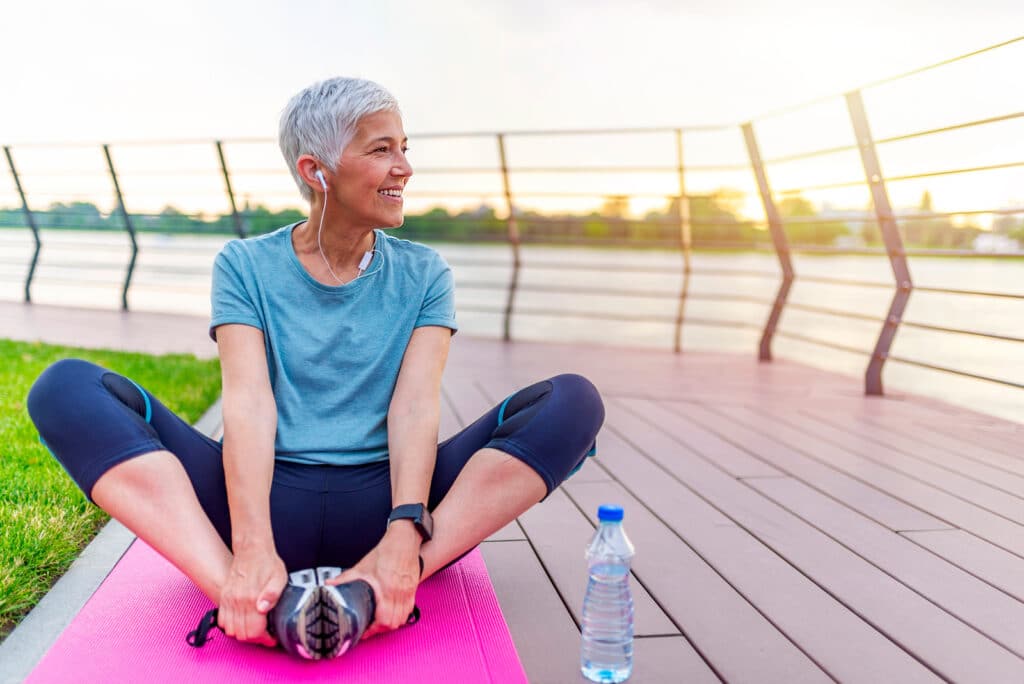
#6 Start With Walking
If you haven’t run since school, it’s best to start with walking. Walking is a low-impact activity that will get your body used to the idea of moving again without putting too much stress on your joints.
Walking at a brisk pace will build fitness and ease you into running.
Related post: How Much Walking For Weight Loss
#7 Allow For Lots Of Recovery Time
When you’re starting to run, you need to be patient. It takes time for your muscles and joints to adapt to the new activity. It’s especially true when you’re an older runner.
Older runners will take longer to recover from runs than younger runners. That’s normal and nothing to worry about. Just make sure you allow for enough recovery time between runs.
Build rest days and easy runs into your training schedule. If you wake up feeling tired – it’s okay to take an extra rest day.
If you try to do too much too soon, you’ll end up injured and frustrated. Slow and steady wins the race!
#8 Don’t Run On An Empty Stomach
I learned this one the hard way. Running with the club last year I fainted at the end of a long training run. A fellow clubmate stopped me from hitting the deck.
Up until then, I’d felt fine – I was running well and keeping up with the group of mainly younger runners. The run was about 90 minutes – long enough to burn through my glucose stores. Fortunately, I came around quickly and felt much better after chomping through a whole bag of jelly babies! My doctor ran tests and gave my health the all-clear. The conclusion: exercise-induced hypoglycemia – low blood sugar level – from running on empty.
I’m not diabetic and I’d never fainted when running before – so it came as a huge shock. It didn’t put me off running but these days I always carry a sugary snack with me and will have a sweet or two if I’m out running for more than an hour.
It’s probably not an issue for short runs as a beginner runner but play safe – don’t run completely on empty. Talking with my running friends, low blood sugar levels do seem more common in older runners but at the moment I can’t find any studies to back this up.

#9 Enjoy Your Running
There are all sorts of different reasons for running but if you’re going to make running a long-term habit you need to enjoy it. So find a reason to run that works for you.
If you hate running on your own, join a club or sign up for a race. Or use running as an excuse to explore new places – there are plenty of scenic trails to discover and ways to make running a mini-adventure.
Related post: 11 Easy Ways To Make Running More Fun
#10 Quality vs Quantity
There’s a temptation among beginner runners to focus on their running distance – racking up longer runs rather than aiming for quality running. If you want to become a better runner, there’s a lot more to running than distance.
The long run is an important part of your training schedule but as you become a more experienced runner, quality speed work sessions are just as important – intervals, fartlek, hill sessions, tempo runs – these will all help you get stronger and become a faster runner.
Of course, quality vs quantity all depends on what type of runner you want to be. Not everyone wants to be the first over the finish line. There’s nothing wrong with jogging or aiming for adventure as an ultra runner.
For most runners, the sweet spot is an 80/20 split. 80% of runs at an easy pace and 20% of quality sessions building strength and speed. Racking up excessive junk miles at a medium pace doesn’t give your body time to recover or do anything for your progress as a runner.
For older runners especially, focusing on quality running is the best way to avoid overuse injuries and get the most out of your training.
Related post: How To Become A Better Runner
#11 Cross Training
One way to keep your running focused on quality over quantity is to supplement your running with cross-training. Low-impact sports such as cycling and swimming have less injury risk for older runners but can still build strength and fitness.
They’re also a good way of adding variety to your training and keeping training fun. Swimming works the whole body, and it’s great for building upper-body strength – something that many runners lack.
I also like to cycle and I use a stationary bike in the gym in the winter months when I can’t face running in the rain.
By adding cross-training to your schedule you’re building strength and giving your running muscles a rest. It means you’ll get more benefits from your running sessions and can help you avoid over-training.
Related post: The Best Cross Training For Runners (And Why You Need This)
#12 Injury Prevention
Avoiding injury is important for all new runners but it’s especially important when you start running at 50 plus. Injuries take longer to heal in older bodies.
Remember less is more. It’s important to build a regular running habit rather than try and run too much too soon.
Build distance slowly and wait until your legs are stronger before adding intervals and fast training sessions. Use strength training and cross-training to become a well-rounded runner, capable of coping with training.
Being cautious is the best way to enjoy your running rather than becoming a runner plagued with injuries from over-training.
Related post: Running Form – Should You Change Your Running Technique?
Running is a great way for people over 50 to get in shape and improve their health. There’s no upper age limit if you want to become a runner.
If it’s a long time since you last exercised it’s always best to check in with your doctor first and it can be a good idea to follow a walking program first before starting to run.
There are a few differences when you start running over 50 – you may need more rest days in between runs but you can always adapt training schedules to allow enough recovery days.
Follow the Couch To 5K training plan (or even the Couch to Half Marathon program) -and before you know it, you’ll be running your first race!
Are you inspired to start running at 50? What are you waiting for? Get out there and get moving!
Running 101 Training Guides & Walking Schedules
5K Training Plans
- Couch To 5K Beginner Training Plan
- 12 Week 5K Training Plan
- 10 Week 5K Training Plan
- 8 Week 5K Training Plan
- 6 Week 5K Training Plan
- 4 Week 5K Training Plan
- 5K Training Plan Intermediate

